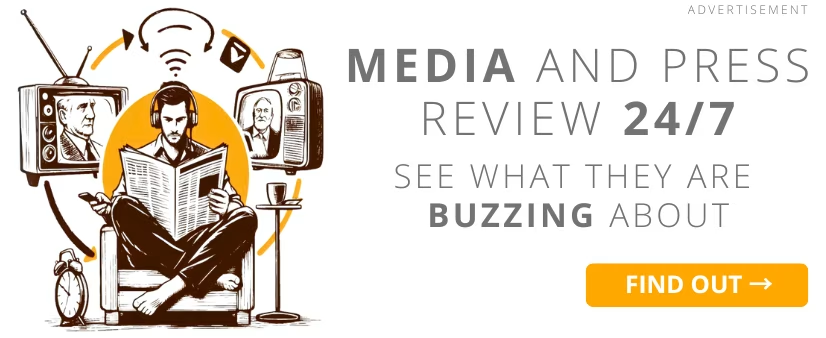When launching a new client, the most popular PR actions are one-to-one meetings with journalists and press breakfasts or lunches with a select group of journalists. European differences were noted in the execution of these events. Southern European companies prefer single-city conferences and are generally not in favor of large-scale events. In Eastern Europe, however, mass conferences across multiple cities are common. Central Europe places a high value on direct meetings with journalists, while Northern Europe favors press breakfasts and lunches.
On a European level, journalists show the most interest in events and conferences related to consumer goods, with pharmaceutical events attracting the least interest. Worldcom’s research also highlighted substantial regional differences in topic interest. For instance, organizing a "technology" conference in Southern or Eastern Europe is likely to attract more journalists than if it were held in Northern or Central Europe.
Additionally, Central European journalists are the most selective about attending out-of-town conferences, only participating if the topic is highly relevant and travel costs are covered (compared to Northern Europe, where 40 percent of journalists would attend even if covering their own travel expenses). Worldcom members also believe that foreign press releases should be translated into the local language. Portuguese media are an exception to this, preferring press releases from Brazil in English rather than Brazilian Portuguese.
Nearly 30 percent of Worldcom members view Facebook as an effective tool for B2B campaigns. This practice is particularly popular in Eastern Europe, with 75 percent of firms in the area recommending it. In Northern Europe, Facebook is not used at all for business communication. Furthermore, most partners (70.6 percent) noted that Twitter is not a widely used tool, with less than 25 percent of journalists utilizing it.
The study’s findings are quite fascinating, as they reveal common trends within Europe’s PR industry while also highlighting essential differences. When conducting PR activities, it’s important to remember that each country has unique characteristics that make it distinct. Consequently, the same actions might be carried out very differently abroad, stated Imma Folch, Worldcom EMEA’s marketing director. “The research shows just how adaptable the PR market must be. There is no room in this industry for applying standard approaches that fail to meet the needs and expectations of the market,” added Anna Garwolińska, President of Glaubicz Garwolińska Consultants. “Working on an international and cross-cultural level requires understanding the local market to spare both the company and its client any potential faux pas.”
***
The study was conducted in December 2010 among 17 agencies from Central Europe (Germany, the Netherlands, Switzerland, and Austria), Eastern Europe (Czech Republic, Lithuania, Poland, Russia, Slovenia, and Turkey), Northern Europe (Denmark, Finland, the United Kingdom), and Southern Europe (France, Italy, Spain, and Portugal). Its aim was to identify regional differences and analyze media trends in Europe across the following sectors: tourism, public affairs, pharmaceuticals, IT, technology and electronics, health, fashion and cosmetics, food and beverages, and consumer goods.
COMMERCIAL BREAK
New articles in section Skills and knowledge
War reporter in the new reality. Evolving techniques, same purpose
KFi
What happens when war breaks out just across the border and journalists aren't ready? Polish reporters faced that question after Russia invaded Ukraine in 2022. Lacking training, they improvised: blurred details, hid names, and balanced trauma with truth.
A heuristic trap in media coverage. How loud headlines boost fear
Bartłomiej Dwornik
A negative message that rests on emotion lifts the sense of threat by 57%. Why do reports of a plane crash drive investors away from airline shares? Why do flood stories spark worry about the next deluge? The pattern is irrational yet clear and proven.
How LLMs are reshaping SEO. Smart content strategies for the age of AI
BDw
For years, SEO was a fairly predictable game. Pick the right keywords, optimize your content, and watch your website climb the rankings. But today, a silent revolution is underway - and it`s being led by large language models (LLMs) like ChatGPT, Claude, Gemini, and DeepSeek.
See articles on a similar topic:
On TikTok, Music Rules. Three Tips from an Expert on How to Leverage It
BRM
Music dominates TikTok – more specifically, well-chosen music, as it often determines the success of a video, educational campaign, or advertisement. How should a company select music for TikTok content? Tips from Wojciech Psiuk, music supervisor from Sirens.
AI slops and microtargeting. Why wou should NOT LIKE the bread horse
Bartłomiej Dwornik
"I grew this garlic chive all by myself on the windowsill. But I bet you won't congratulate me." Do you also see an influx of such posts in online communities? Be careful. This is called AI slop (or Boomer Trap), and it is NOT just a harmless game or entertainment. It is a well-thought-out mechanism in which the currency is you. First, your time and engagement. And soon, your money.
How ChatGPT, Google Gemini, and Other Large Language Models Work
Krzysztof Fiedorek
These powerful algorithms can generate text, translate languages, write various types of creative content, and answer your questions in a way that often feels like a conversation with a person. But how is it possible for a machine to mimic human intelligence so well?
How to Write an Article That Google Loves and People Understand
Bartłomiej Dwornik
The order of priorities in this guide's title is intentional. In 2024, to reach a larger audience, you must first convince the algorithms to display your content to readers. First - the article must be factually sound. Second - it should look appealing and be easy to read. We’ll focus on the latter.





























